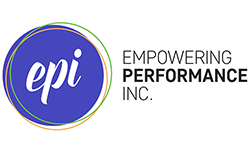Mea Culpa (Why It’s Important to Admit Mistakes and How to Do It)
Everyone has to eat humble pie once in a while. We all mess up occasionally and, as uncomfortable as it can be, we have to admit it when we do.
Just last week, I had to eat two helpings after allowing a couple of silly (and, fortunately, small) mistakes to slide through. It never tastes that great, does it? I didn’t catch something, even after working on the documents through multiple iterations. Of course, I didn’t realize the mistakes in time to stop them reaching the eyes of our clients. Why is it that we suddenly notice something that should have been obvious just seconds after hitting Send on an email?
But once you do notice an error, it’s best to own up and say a mea culpa.
This time my errors were due to multitasking and a rushed timeline. And they were relatively inconsequential mistakes, thank goodness; I was mostly just embarrassed. But it reminded me that as human beings, we’re inevitably going to miss the mark at times, and maybe not in such a small way. What really matters is what we do afterward.
Step 1: Admit it.
Your client will most likely forgive you and perhaps even become more loyal to your organization if you immediately and proactively own up to your mistake. That’s where mea culpa comes in. Mea culpa is Latin for “through my fault” and came from a Roman Catholic prayer of confession. It’s a “formal acknowledgment of personal fault or error.” I’m not suggesting you actually say, “Mea culpa!” But, yes, it’s important to admit your misstep.
Step 2: Apologize. Sincerely.
Express your regret in a straightforward and honest way. And don’t offer excuses or minimize what the effect might have been on your customer.
Step 3: Take personal responsibility.
This is different from admitting you made a mistake. It’s acknowledging YOU made a mistake. You don’t blame it on your team or the circumstances: you own it.
Step 4: Offer a Solution.
Describe how you plan to address the error. If it’s something small, like a typo in a report (ahem!), it may simply mean resending a corrected document with your mea culpa email. If it’s more significant, then give serious thought to how your company can rectify the situation in a way that causes the least amount of hassle for your customer. And figure out how it won’t happen again.
Acknowledging your errors, saying you’re sorry, and figuring out how to fix things are all important steps to building and maintaining trust with your clients.
It may even increase their loyalty if you handle things well. After all, making mistakes is only human—and we don’t (or shouldn’t) leave our humanness behind when we go to work. It’s what makes us unique and connects us to others. And it’s how we know we’re dealing with another human being, who also has had to eat their share of humble pie once in a while.
Bon appétit!
-Michelle Kelly, CEO (Chief Enjoyment Officer)
P.S. I promised to let you know how our month of “delights” went. We’re all still sharing delights at our weekly team meeting. And we occasionally pass along delights via our team chat. It’s been a fun way to deepen our connection and share positive experiences and laughter. I know it’s opened my eyes just a little bit wider to the small joys around me.
Recommended Reading
The Power of Moments: Why Certain Experiences Have Extraordinary Impact
by Chip Heath & Dan Heath
I recommended a book by the Heath brothers back in May and I’m doing it again because they’re just that good!
The Power of Moments (2017) describes “memorable and meaningful” experiences that authors Chip and Dan Heath call “peak” moments. Four elements—elevation, insight, pride, and connection—saturate our most memorable positive moments, including customer service. This book not only explains why we never forget certain positive experiences, it shows us how to deliberately create more of them. It’s a favorite of mine—it’s fun to read and gives the reader plenty to chew on!




